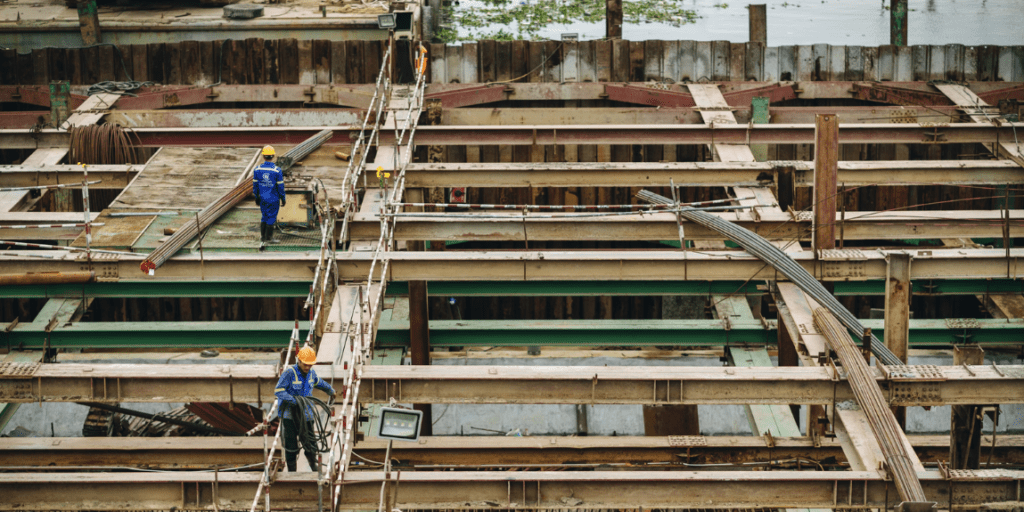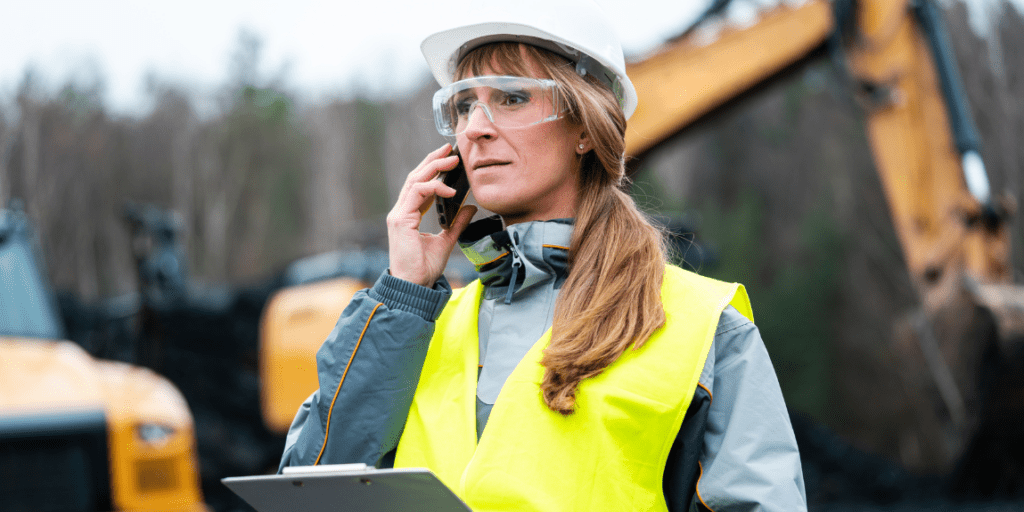

I was struck by a comment I read recently in the media by a leading industry figure in the US. “This is a perspective issue and how we as an industry tell our story,” said the Association of Equipment Manufacturers’ John Somers, referencing safety in construction, and how perceptions were a barrier to making the industry more inclusive.
Somers’ point was bound up in how we tackle the problem of labor shortages, but for me as a long-time marketer and strategist, the notion that we are not positioning our industry in an effective and compelling way really resonated.
He’s right of course. Construction is more often than not defined by a myriad of problems that have far-reaching implications and cast a negative shadow across the board. Whether it’s the often-quoted 37% of global emissions attributed to buildings & construction, incidents on the jobsite, budget overruns and a general lack of efficiency, this is the narrative that pervades and ultimately hampers the attractiveness of the industry.
But while these stories are relevant, they are not the only story. And even these narratives — rooted in reality though they may be — are a lot more nuanced than these tip-of-the-iceberg depictions allow. Let’s take a look and you’ll hopefully see what I mean.
Now, construction’s record on emissions is on the face of it, not a good one. Putting together big projects is inevitably a costly process and there is no getting around the fact that the complexity of the logistics chain from design and manufacture, transport, the jobsite and on to completion is extraordinary. In such circumstances, there is inevitably emissions. It is unavoidable.
But it’s important to point out that a significant proportion of the 37% number on emissions reporting comes from building materials rather than construction per se. That’s one caveat. And then let’s look at the end product here. We talk glibly about the resulting infrastructure as if it is some sort of given, but it is not. The hospitals, the schools, residential buildings and other critical infrastructure like metros, roads, sewage and so on don’t just appear.
‘Construction is more often than not defined by a myriad of problems that have far-reaching implications and cast a negative shadow across the board.’
So we are immediately in the territory of making a cost opportunity analysis here as to whether the benefits of the outcome outweigh the process costs. And when you put it in those terms, the argument already begins to shift. We can’t after all function without a roof over our heads or the infrastructure needed to drive economies.
If we then suggest the balance sheet is roughly 50/50 at that point, how then do we factor in all the improvements in sustainable building practices and energy usage that we have begun to witness over the last decade or so? And what about the technological improvements in improving emissions reporting that has revolutionized, for example, how car drivers use their dashboards to mitigate emissions and which is now starting to infiltrate the construction industry as better reporting technology and more sustainable-driven behaviors facilitates cultural shifts in attitudes?
That’s, for example, enabling the machine operator to use machines in a more eco-friendly way, site managers to allocate resource more effectively and efficiently, and fleet managers to guard against idling, schedule maintenance appropriately and even consider moving towards electric vehicles where budgets allow.

The impact of such behavior is of course uneven and different parts of the world are further down the road than others. But the drive towards more sustainable methods of construction in buildings and other infrastructure has become wrapped up in a powerful cocktail of UN-driven targets on Sustainable Development Goals, societal and regulatory pressures for better quality infrastructure and a desire within the industry itself to be better.
That will almost certainly lead to significant improvements in that ugly 37% number. And, as has been pointed out before, moving that number even one percentage point will equate to a significant improvement in absolute emissions.
Our ambition of course should be to do so much more than this but Trackunit’s report this year on ‘Constructing a better future’ demonstrated unequivocally that the trend is progressive, powerful and is moving only in one direction. And that’s the narrative that I firmly believe will become the bigger story over the next 5-10 years.
There’s nothing that chills the blood more for anybody working in the construction industry than incidents on the jobsite. A quick google search of say, the World Cup in 2022 will turn up numerous unpleasant headlines and the death of just one worker on any construction site in any part of the world is beyond regrettable.
But organizations like the International Power Access Federation have been doing sterling work on raising the profile of safety on site, especially highlighting how to mitigate risk on mobile elevating work platforms and other high-risk machinery. IPAF‘s Global Safety Report 2023 showed a year-on-year decline in fatalities down 19% to 102 from 2021 numbers, even as the level of reporting rose.
‘The industry is in addition taking far greater care of its workers than ever before with mental health on the agenda, and various programs proliferating that are supportive of family structures with progressive parental policies and child-friendly initiatives.’
That is of course 102 too many and a snapshot of just one part of the industry, but the year-on-year decline IPAF documented is part of a long-term trend that is seeing incidents slide alongside a development in the technology that is enabling project managers to exercise a far greater degree of certainty over who has access to high-risk machinery.
We’ve cited before the potential role access management could play in making the ‘zero-incident’ jobsite a gettable target and we see no reason to dilute that claim as the IoT solutions develop. Aside from making jobsite incidents increasingly rare, it also means less budget overruns, fewer halts in the construction process and a smoother, smarter operation that has the inevitable affect of cutting down on downtime too.
And it’s why we’re fully on board with IPAF and other organizations around the globe in leveraging this fusion between the desire to make jobsites safer and the technological developments that will only underpin that trend.
A safe workplace inevitably has other implications too. We suddenly make the jobsite and other construction-related jobs more attractive to groups who might have been put off by a seeming bias towards white, middle-aged men.
That this bias is there is evident in the numbers, but if construction companies really wish to address labor shortages, then they have to up their game on their inclusivity initiatives. And again, I’m incredibly encouraged by what we are seeing in the industry as proactive policies are clearly on the increase and the industry opens its doors to a far wider pool of talent.
‘We’ve cited before the potential role access management could play in making the ‘zero-incident’ jobsite a gettable target and we see no reason to dilute that claim as the IoT solutions develop.’
Wage differentials between gender are, for want of a better word, encouraging. In the US, for example, female salaries on average stand at 96% of their male counterparts. That’s obviously four percentage points too low, but it stands up well against other industries, and there’s every reason to believe that true parity can be achieved in the next few years.

The industry is in addition taking far greater care of its workers than ever before with mental health on the agenda, and various programs proliferating that are supportive of family structures with progressive parental policies and child-friendly initiatives.
Furthermore, we’re also on the tipping point of a ConTech investment wave into construction that will open up a whole host of new job opportunities not necessarily tied to the jobsite. We’ve seen how investment in the industry hit USD 10 billion by 2021 and that is usually the tipping point towards an acceleration in capital over a 2-3 year period towards USD50b.
That it hasn’t happened yet in construction can be attributed to COVID-19 and the war in Ukraine but other industries have demonstrated there is an inevitability about these numbers when the dust settles. Much of that investment will go into the technology side of construction enabling an ecosystem that is far more inclusive, can evolve naturally with fresh, diverse perspectives and will enable construction to make great strides towards more sustainable solutions, improved safety and a more robust and resilient workforce.
Isn’t this a future you’d like to be part of? I know I would and I’m glad that I am. Let’s celebrate what we do, guard against complacency, and do everything we can as an industry to make construction even better.